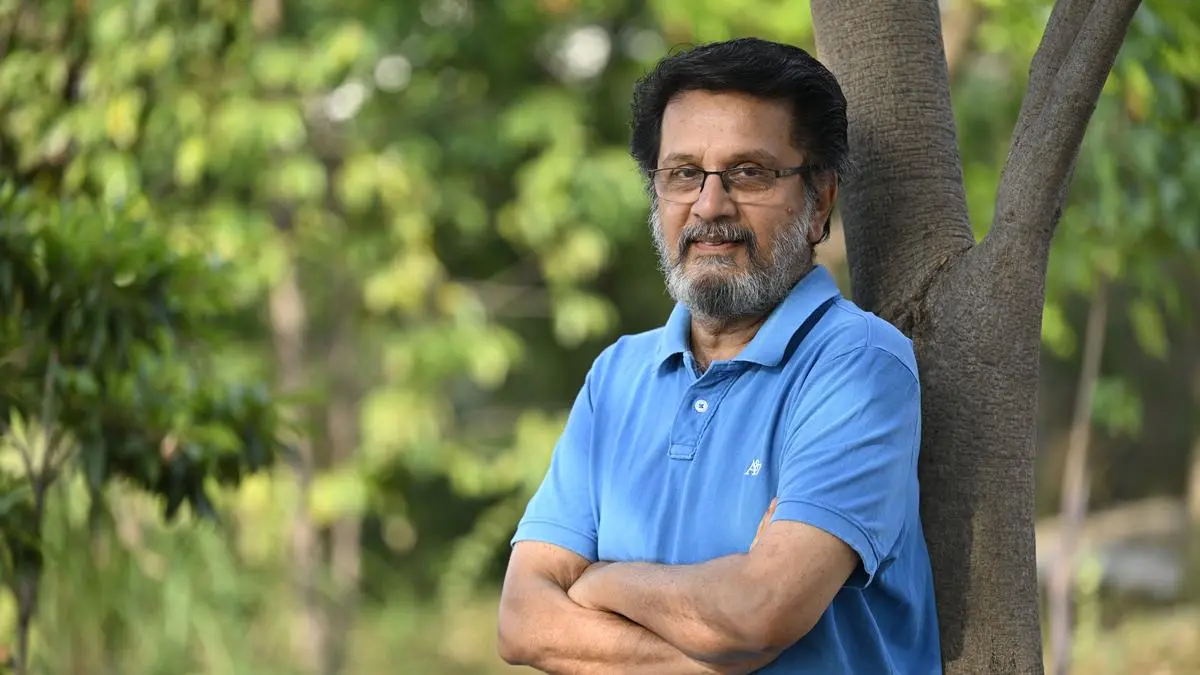On April 2, the Supreme Court is scheduled to hear a case that brings to the forefront a long-standing dispute between conservationists, who argue that forests should be reserved for wildlife, and human rights activists, who advocate for the rights of people to live in forest areas. The case challenges the very constitutionality of the Scheduled Tribes and Other Traditional Forest Dwellers (Recognition of Forest Rights) Act, 2006 (FRA ), which upholds the rights of forest-dependent communities. Just two years after the FRA was passed, in 2008, a group of conservation organisations challenged its validity in the Supreme Court.
Then, more than 10 years later, in 2019 , the Court directed States to evict “illegal” forest-dwellers. But within a fortnight, after a strong pushback from communities and the Tribal Affairs Ministry, the court stayed its own order. The April 2 hearing will likely see the results of a satellite survey of forest land “encroachments”.

C.R. Bijoy, who examines natural resource conflicts and governance issues, discusses the flawed and long-held belief that wildlife needs to be “isolated from humans”, and why the people-centric law, the FRA, is in fact the only Act to democratically rejuvenate and conserve forests.
Excerpts from an interview: How ethical is it to keep areas of tiger reserves “inviolate”? Communities all over the world, particularly those who live in forest ecosystems, have always depended on their environment for livelihood. They regulate their own activities as much as they can to ensure nature continues to meet the community’s needs. They are mindful of what they access forests for, of who can access them and in which seasons, and of the need for short-time bans on access to allow regeneration.
In some sacred groves , for instance, there is a total ban on resource access. The FRA recognises this community-approach towards the landscapes they inhabit, and overrides all other forest-related laws. It ushered in much-needed democracy in forest governance by replacing the oppressive colonial legacy with a forest and people-centric regime.
The term “inviolate” entered the legal lexicon through a 2006 amendment to the Wildlife Protection Act [WLPA, 1972], making tiger reserves a statutory category, which is still not defined. The forest bureaucracy, aided by the conservation aristocracy, began to use this term to illegally evict forest-dwellers—in effect, making it their exclusive preserve, colonising forest-land commons, and progressively snuffing out traditional rights. So, forests and their rich resources became available to the State to use at will.
In 2023, the FCA [Forest Conservation Act, 1980] was fine-tuned to fast-track forest diversion by taking out certain categories of forests and projects from its purview. “Inviolateness” is an ancient concept that refers to securing a space from harm. Communities around the world have historically manipulated the environment to suit their needs, and if it is harmful, they avoid it.
This concept has entered the FRA, which also says that relocation can be carried out only if coexistence is not possible and if it is voluntary. This is exactly what the FRA insists on. It adheres to the latest principles of ethics.
But this has not happened in practice. The existing standards of democratic decision-making and scientific rationale are not being implemented. Adivasi women carry straw for their roofs, on the outskirts of Guwahati in February, 2025.
| Photo Credit: RITU RAJ KONWAR How many Adivasi people have been evicted from critical tiger habitats (CTHs) since 1972? How often has consent been sought for these relocations? As many as 25,007 families, from 251 villages, have been “relocated ” since the inception of Project Tiger in 1973 to the mid-2024. In June last year, the NTCA [National Tiger Conservation Authority], peeved by these numbers, directed all 19 tiger-bearing States to ensure “voluntary relocation” on a “priority basis”: This involved 64,801 families from 591 villages located in core or critical tiger habitats. But tiger reserves are not created through a democratic process.
CTHs are mandated to be established without adversely affecting forest-dwellers’ rights, and after the identification of these proposed inviolate habitats with the consent of the gram sabhas; these processes are not followed anywhere. Invariably, signatures on stamp papers are obtained as a fait accompli from the displaced families to keep the records straight. Also Read | Will Forest Conservation Amendment Act of 2023 sound the ‘death knell’ for India’s forests? In 2006, a progressive law was enacted, to right the wrongs of the “historical injustice to the forest dwelling Scheduled Tribes and other traditional forest-dwellers”.
But the Scheduled Tribes and Other Traditional Forest Dwellers (Recognition of Forest Rights) Act (FRA) soon sparked bitter opposition from a section of conservationists, who argued that forests should be reserved for wildlife alone. Soon after the FRA was enacted, conservation organisations and retired foresters challenged its validity in various High Courts and the Supreme Court. In one case, filed in 2008 (and later clubbed with all other cases on the issue) the petitioners advocated the removal of forest-dwellers or “encroachers” and questioned why those whose FRA claims had been rejected, had not yet been evicted.
Now, two decades since the FRA came into being, the Supreme Court continues to hear the case. And the next hearing, scheduled for April 2, could determine the future of millions of people who live in and depend upon forest land and some of its resources for their income. “The FRA is a human right” and reverses “a colonial history of dispossession of forest dwellers of their land, which had resulted in extreme poverty,” says Nitin D.
Rai, a fellow at the Ashoka Trust for Research in Ecology and the Environment, Bengaluru. “The forests that local communities were managing, for both ecological and livelihood purposes, were appropriated by the government and then transformed into timber production areas, and more recently into carbon sequestration and tourism landscapes. The FRA is a first step in restoring their lives as well as the landscapes that have been ruined by market-oriented production regimes,” Rai told Frontline .
You have written that the FRA is the only law that actively prevents the diversion of forests and critical wildlife habitats. Why do you say so, and how efficiently has this law been implemented? In fact, the FRA of 2006 first stipulated that once an area is notified as a critical wildlife habitat [CWH], it cannot be diverted for any purpose. This was because, ironically, the very statutory authorities who by law can notify forests and protected areas are the ones diverting them for non-forestry purposes.
Both the WLPA and the FCA permit forest diversion in protected areas, including CTHs. As per the FRA, the community has to give its consent in writing to the proposed resettlement package, and no resettlement can take place until facilities and land allocation are completed. But to date, no CWH has been notified.
Relocation from protected areas, primarily CTHs, and forest evictions continue. How many pattas (individual and community forest rights) have States issued under the FRA? How much of India’s forests is actually covered by this Act? The Environment Ministry declared in 2009 that the FRA “assigned rights to protect around 40 million hectares [ha] of community forest resources to village level democratic institutions”. But as of January 2025, only 20.
6 lakh ha, or just 2.5 per cent of the 827.36 lakh ha of rights over forest lands have been recognised.
Another 56.5 lakh ha are recorded as possessing community rights, many of them overlapping with each other, resulting in an inflated figure. Together, at best, 15-20 per cent of the estimated 40 million ha (estimated as the “minimum potential land” to be demarcated under the FRA, 16 years ago, by the Environment Ministry) has been recognised under the FRA.
At a protest against the land acquisition policy in New Delhi on November 2010. Protesters demanded that the government stop the eviction of people from forests without an acceptable rehabilitation package. | Photo Credit: Manpreet Romana/AFP What role do State forest departments play in conservation and diversion of forests? The forest department’s role begins with notifying the land, whether actual forests, common lands, agricultural and grazing lands, grasslands, wetlands, streams, rivers, lakes, coasts, mangroves, arid and semi-arid regions, salt desert, cold desert, or highland pastures.
They can modify, regulate, or extinguish peoples’ rights even though the Environment Ministry admitted in 2004 to the Supreme Court that “the historical injustice done to the tribal forest dwellers through non-recognition of their traditional rights must be finally rectified”. Forests can, and have been, de-reserved or denotified and diverted for non-forestry purposes as long as the FCA rules are followed. But these rules have not been followed: The Rs.
81,000 crore project in the Great Nicobar Island that has received Stage I forest clearance for 130.75 sq km of forest is the most recent example. The FRA has not been implemented in the Andaman and Nicobar Islands, as officially confirmed by its administration.
A significant part of the project area is also a Tribal Reserve Area, designated under the Andaman and Nicobar Islands (Protection of Aboriginal Tribes) Regulation, 1956. Also Read | India’s forest surveys conceal a deep institutional failure How important is the implementation of the FRA for species conservation? Has this law reduced human-wildlife conflict or the retaliatory killing of wildlife? In reality, humans have always coexisted with animals with all its risks, whether from flora, fauna, wild or not. And that has involved human-wildlife conflict.
Protecting certain geographical spaces for wildlife as national parks or sanctuaries or wildlife corridors has created a piece of fiction that these are the only areas where wildlife exist. And the “wildlife” that is given primacy are tigers , followed by elephants and other wild cats. Along with these distortions of facts comes another propaganda that human-wildlife conflict has increased due to increased incursions into wild habitats by local communities, especially forest-dwellers.
But the real intruders into natural landscapes are state-sponsored large-scale tree-felling, plantations of exotic species, often monocultures, which rapidly deplete soil fertility, and groundwater; the “afforestation” of grasslands, which are treated as “wastelands”, is killing rivers and lakes as invasive species proliferate, and their diversion for infrastructure and industrial projects is shrinking this vulnerable ecosystem. To add to this are restrictions on controlled grazing that actually minimise forest fires. Despite the FRA, forest-dwellers and their gram sabhas are not in control: The forest departments continue to lord over forests.
Conflicts are often very intense in protected areas where the bureaucracy is most resistant to recognising peoples’ rights. Human-wildlife conflict can only reduce in these areas when forest rights are accorded to people as envisioned in the FRA: The territorial right to govern, protect, conserve, and manage forests and wildlife, particularly in protected areas. Mridula Chari is an independent journalist based in Mumbai.
CONTRIBUTE YOUR COMMENTS SHARE THIS STORY Copy link Email Facebook Twitter Telegram LinkedIn WhatsApp Reddit.
Environment

Human-wildlife conflict can reduce only if community rights are recognised: C.R. Bijoy

Despite the FRA, forest departments still control forests, not forest-dwellers and gram sabhas, says the researcher of natural resource conflicts.















